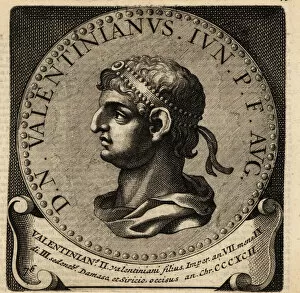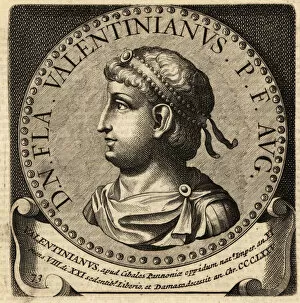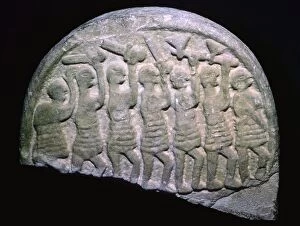Valentinian Collection
Valentinian: A Glimpse into the Roman Empire's Legacy Step back in time and immerse yourself in the captivating world of Valentinian, a name that echoes through history
For sale as Licensed Images
Choose your image, Select your licence and Download the media
Valentinian: A Glimpse into the Roman Empire's Legacy Step back in time and immerse yourself in the captivating world of Valentinian, a name that echoes through history. From exquisite silver Viking disc-brooches to Byzantine coins with traces leading back to York, this enigmatic figure has left behind an indelible mark. One cannot discuss Valentinian without mentioning his predecessors. The portrait of Roman Emperor Valentinian III stands as a testament to his grandeur, reminiscent of the mighty Julius Caesar himself. As we delve deeper into the annals of history, we encounter portraits depicting other influential emperors such as Valentinian II and Gratian. The gold solidus bearing the likeness I is shrouded in mystery, its creator unknown but its allure undeniable. This Byzantine treasure transports us to an era when power was symbolized by precious metals and intricate craftsmanship. Yet, it is not only within these imperial circles that Valentinian's legacy thrives. The Lindisfarne Stone reveals warriors who may have been Vikings - a connection that intertwines different cultures and eras. Cast silver disc-brooches further emphasize this fusion, blending Viking artistry with Roman influence. Coins minted during Valentinian's reign provide glimpses into daily life during those times; Flavius Valentinianus' face etched onto them serves as a reminder of his enduring impact on society. Finally, behold the marble portrait busts capturing either Valentinian II or his half-brother Gratian - masterpieces from Byzantium itself. These sculptures immortalize their subjects' features for eternity while offering insight into their character and stature. Valentinians' story transcends borders and epochs; it represents an amalgamation of cultures united under one name. Explore this rich tapestry woven by ancient civilizations – where Vikings met Romans, empires rose and fell, and the legacy endures.












